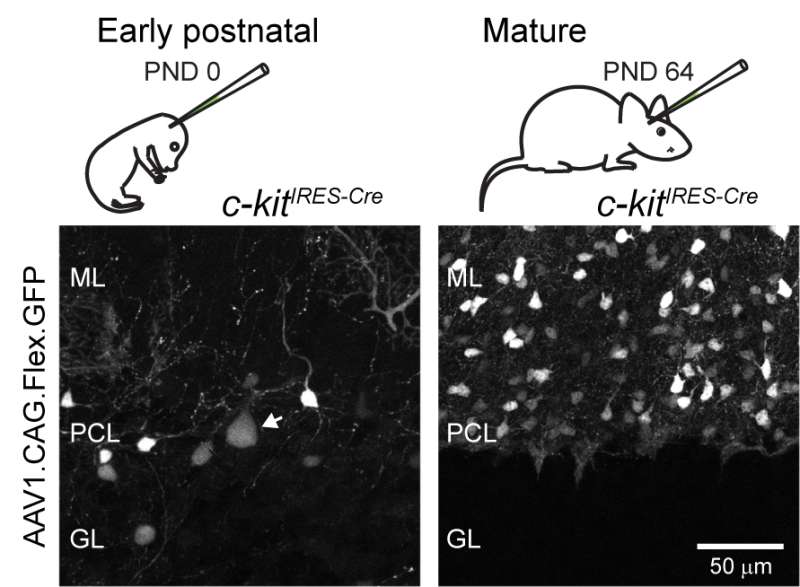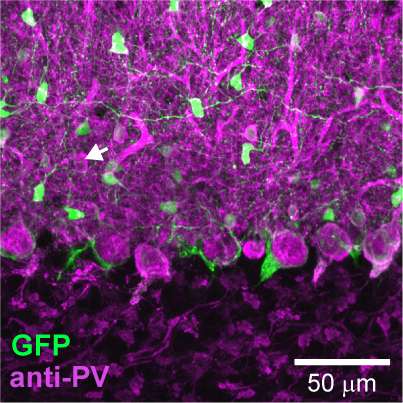Scientists probe function of cerebellar interneurons with new technique

The cerebellum is an area of brain at the back of your head involved in movement. Its neuronal circuitry is relatively simple compared to other areas, but scientists still have a lot left to learn regarding its role in motor control and motor learning. The cerebellum is composed of several distinct types of neurons and isolating the function of each individual type of neuron within its circuit has remained a challenge.
Purkinje neurons are the only cells that send information outside of the cerebellum, but their output is influenced by several other types of neighboring cells, including local inhibitory interneurons located in the molecular layer. Researchers have been interested in these cells because they are known to prevent over excitation and are likely to be involved in motor disorders such as cerebellar ataxia. However, they are difficult to study in isolation.
There have been many attempts to understand the role of these inhibitory interneurons in cerebellar function. But as Matt Rowan, Ph.D., a Research Fellow who worked on the study mentioned, most methods have come up short in selectively targeting these interneurons. Samantha Amat, a lead author of the study, explained, "The solution was to find a gene uniquely expressed by interneurons of the molecular layer, but aren't expressed in neighboring cells - and this is exactly what we developed."
Jason Christie, Ph.D., Research Group Leader at MPFI and his team working in collaboration with the lab of Hiroki Taniguchi, also at MPFI, published their study in PLOS ONE in June 2017 describing their technique for selectively targeting and controlling the interneurons of the cerebellar molecular layer relying on a genetically engineered mouse model that exploits a unique gene encoding c-Kit to differentiate interneurons from other cell types.

C-Kit is a protein robustly expressed by inhibitory interneurons of the cerebellar molecular layer, but weakly expressed by other cerebellar cell types, like mature Purkinje cells, making c-kit a good candidate gene to target molecular layer interneurons. By using the c-kit mice in this study, the team was able to specifically access molecular layer interneurons and manipulate their activity using both optogenetic and chemogenetic methods in vitro. The technique should be able to provide similarly exciting results in vivo studies in the future.
"Our new method has transformed the research that we're doing." said Rowan, who is already working on more projects employing these mice. By understanding the role of interneurons in cerebellar function, the team hopes to identify new ways to treat debilitating conditions that affect movement.
More information: Samantha B. Amat et al, Using c-kit to genetically target cerebellar molecular layer interneurons in adult mice, PLOS ONE (2017). DOI: 10.1371/journal.pone.0179347


















